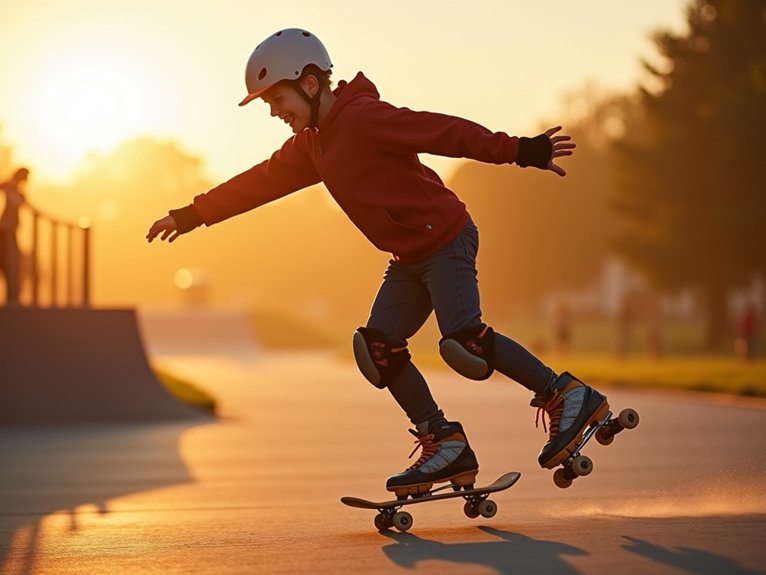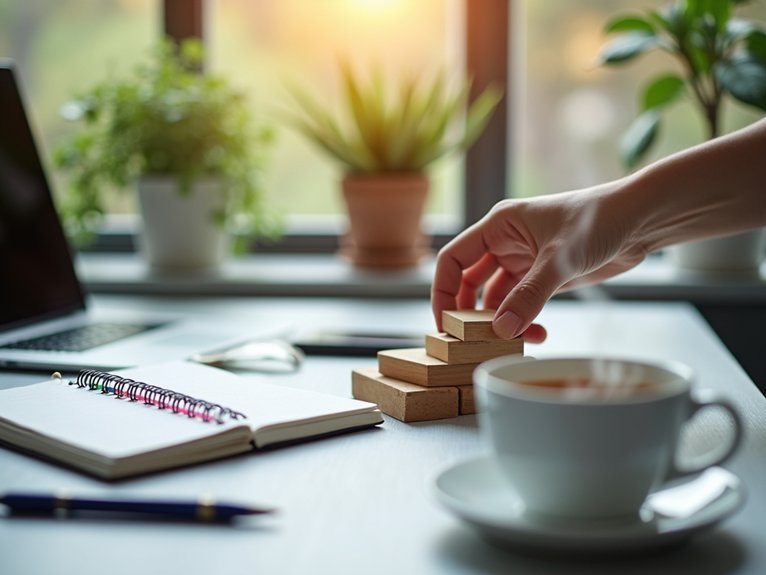Learning to skate safely requires proper safety gear, including helmets, wrist guards, knee pads, and elbow protection. Beginners should start on flat, smooth surfaces with a proper stance: knees bent and weight centered. Mastering safe falling techniques prevents injuries, while practicing essential stopping methods like the T-stop and plow stop builds confidence. Simple tricks and maneuvers can be added gradually as skills develop. Joining group sessions provides valuable feedback and community support for continued progression.
Choosing the Right Safety Gear for Your Skating Style

When selecting safety gear for skating, one must consider the specific style of skating they intend to pursue. Roller derby participants require full-face helmets and robust knee pads, while recreational skaters may use standard helmets and lighter wrist guards.
Essential equipment includes properly fitted helmets certified for skating, wrist guards that prevent fractures during falls, knee pads that absorb impact, and elbow protection. For aggressive skating styles, consider additional padding for the hips and tailbone.
Quality matters—invest in gear from reputable manufacturers rather than budget options that may fail during critical moments. Replace any equipment showing signs of wear or damage immediately.
Finding Your Balance: First Steps on Wheels
Finding Your Balance: First Steps on Wheels
With proper safety gear secured, a beginner skater’s journey begins with mastering balance. First-timers should start on a flat, smooth surface away from traffic and obstacles. Standing in the proper position—knees slightly bent, weight centered, and arms extended—establishes the foundation for successful skating.
Many instructors recommend practicing falling safely by lowering to one knee before attempting to roll. Beginners can then progress to small movements: shifting weight from foot to foot while holding a stationary support. The „marble stance,” with feet positioned shoulder-width apart and toes slightly angled outward, helps maintain stability when taking those initial, exciting rolls forward.
The Art of Falling Properly to Prevent Injuries

The Art of Falling Properly to Prevent Injuries
The paradox of skilled skating lies in mastering the art of falling. When falls become inevitable, skaters should bend knees, lean forward, and tuck arms against the body. Landing on fleshier parts like thighs or buttocks distributes impact better than hands or wrists, which often fracture.
Protective gear is non-negotiable—helmets protect against concussions, while wrist guards, knee pads, and elbow pads shield vulnerable joints. Beginners should practice falling techniques on grass or carpet before attempting them on harder surfaces.
Learning to roll during falls converts dangerous vertical impact into safer horizontal momentum, transforming potential injuries into controlled recoveries.
Mastering Essential Stopping Techniques
Mastering Essential Stopping Techniques
Learning to stop effectively represents the most critical safety skill for new skaters, as uncontrolled momentum inevitably leads to dangerous collisions. Three fundamental stopping techniques provide essential control: the T-stop, plow stop, and hockey stop.
The T-stop involves placing one skate perpendicular behind the other, creating friction against the surface. For the plow stop, skaters push their heels outward while keeping toes pointed inward, forming a triangle shape. Advanced skaters utilize the hockey stop, which requires turning both feet sideways while applying pressure to the edges.
Regular practice of these techniques in a controlled environment allows skaters to develop muscle memory and confidence before traversing crowded spaces.
Progressing Beyond the Basics: Simple Tricks and Maneuvers

Once skaters have mastered stopping techniques and feel confident in their basic control, they can begin exploring simple tricks that enhance both enjoyment and skill development. Beginners should start with basic maneuvers like crossovers, where skaters cross one foot over the other while turning, improving agility and balance.
The heel-toe manual (rolling on front wheels of one skate and back wheels of the other) develops coordination. Skating backward introduces new movement patterns and spatial awareness. Small jumps over painted lines or cracks build confidence before attempting curbs or ramps. Consistent practice with proper safety gear guarantees gradual progression without unnecessary injuries.
Joining the Skating Community: Group Sessions and Events
Why skate alone when an entire community awaits new members? Skating groups offer invaluable learning opportunities through shared knowledge and mutual encouragement.
Beginners can find group sessions at local rinks, parks, and through social media communities. Many cities host weekly meetups catering to various skill levels. These gatherings provide structured learning environments and safety in numbers.
Skating events range from casual roll-outs to competitive showcases. Participants benefit from observing experienced skaters and receiving real-time feedback. Community involvement also introduces skaters to different disciplines they might not discover independently.
Most importantly, communal skating transforms a solitary activity into a supportive social experience.



